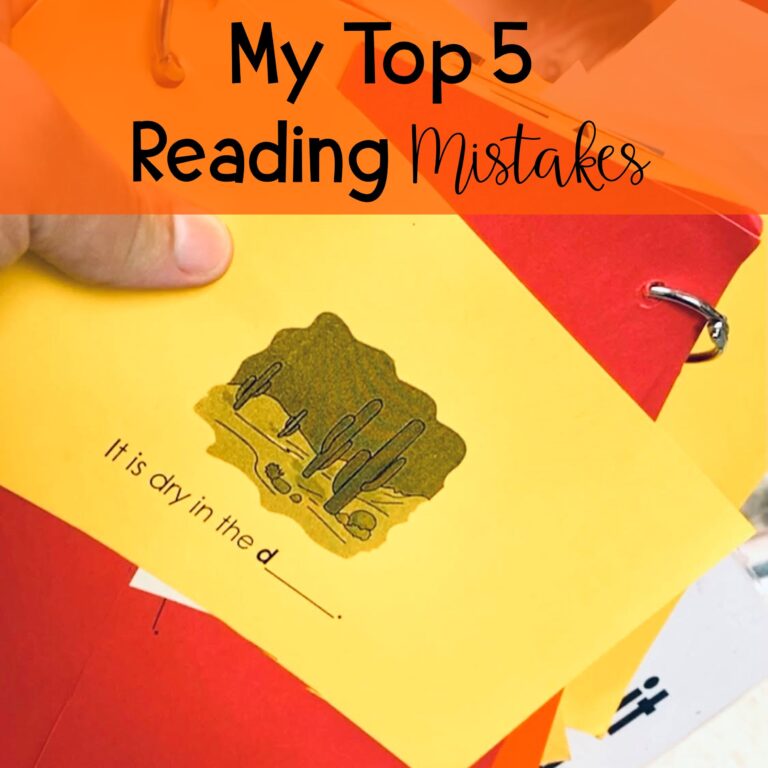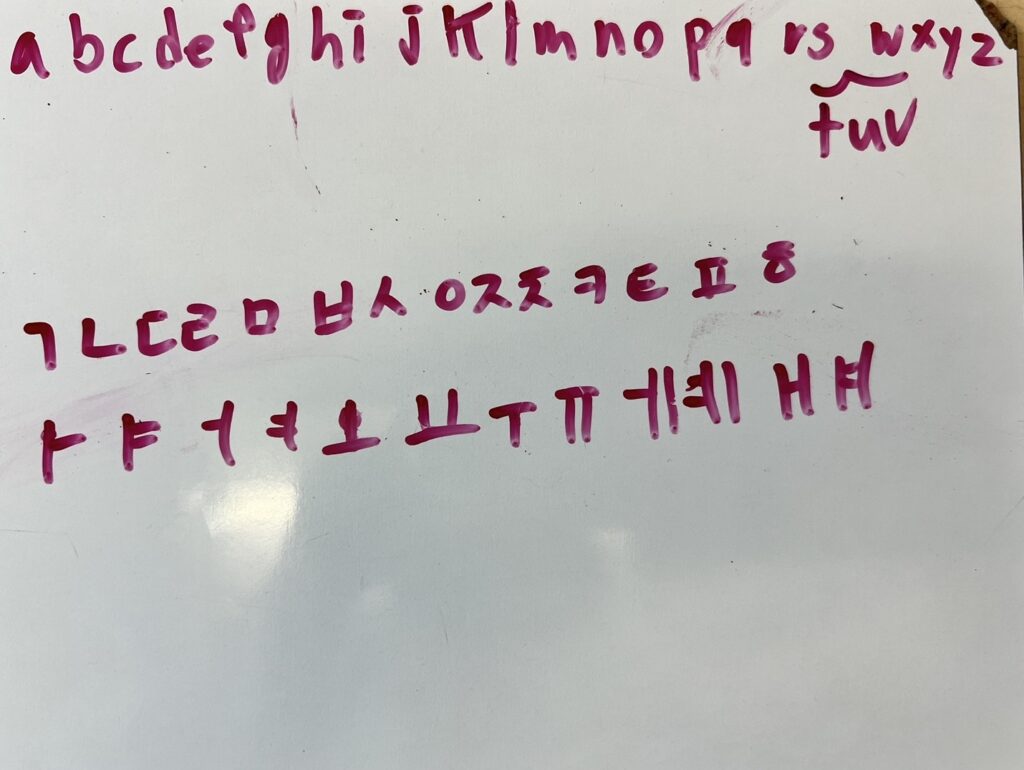
Share This:
Today, I am so excited to announce my first guest blogger: Tracey Tinley from IdeaShopPD! I’m so excited to get to bring your new perspectives and information from a variety of educators. I recently worked with Tracey through Unlocking the Science of Reading conference, and I am blown away by the way she honors all of our children, especially students who are struggling at an older age. Today, she is going to share some tricks and tips for engaging those older beginning readers. You’re going to love it!–Savannah
I have an advantage as an ESL teacher. Many of the students I am currently teaching to read can already read – they just aren’t reading in English yet. While not all of my students are literate in their first language, a good number of them usually are. Having students who can read and write in their first language can make the acquisition of English easier for them in so many ways. From already understanding basic concepts of print, to being able to use first language vocabulary as an anchor for new concepts, students who are literate in their own language already have an impressive tool belt of literacy skills at the ready. The challenge lies in finding ways to recognize these existing skills, while still providing beginner reading and writing tasks that motivate and engage.
Being a teacher is a lot like being the host of the The Shopping Channel. The difference is that instead of selling things that people want and don’t need…you sell skills that students need, but may not always appear to want. For older beginners, student engagement is a critical component in making those phone lines light up. A lot of the early literacy materials that are available tend to be geared toward very young students. From a publishing perspective, there is a very good reason for this. Students who are learning the alphabet and letter sounds tend to be found in the early grades – not sitting in our fifth and sixth-grade classes. But what about the struggling students and ELLs that are? How do we program for their beginning literacy needs while still respecting their maturity as a learner?
My priority when learning of a new ELL’s arrival is to find out if the student has literacy in a first language. My next step is finding out what that first language is. Knowing a student’s first language can make a difference in how you approach English phonics instruction. Not all languages are organized the same way, or use the same alphabetic principles as English. Some languages, such as French and Spanish, have alphabet letters that are virtually identical to those in English. Languages like Turkish and Ukrainian have definite letter similarities to English script, but may contain additional letters or omit others. Other languages still, such as Mandarin, aren’t alphabet based at all and use characters instead. Allowing time for students to compare and contrast their alphabet (or non-alphabet) to the English alphabet can help them make important connections and observations about how English letters and sounds are connected. By taking time to show interest and curiosity in our students’ alphabets, we validate the many skills they have learned before becoming students of English and honor their ability as a reader regardless of the language they read in. If you’re looking for routines or activities that will entice your older alphabet learners, check out my recent Unlocking SOR session. You’ll find some of my students’ favorite games like “Alphabet Challenge”, “Alphabet Takeover” and “ABC Maze”. (Blog post coming soon on these!)

You know what they say, you catch more flies with honey. The same can be said for the visual presentation of many of our beginning literacy activities. A lot of times it can be the style or visual design of some of our favorite phonics activities that don’t appeal to older students. While we may not hear students complaining when presented with materials that are below their maturity level, we probably aren’t hearing them asking us for more either. There have been many times that I have found what I think will be a great game or resource, only to be let down by the graphics. At first glance, it may seem like a non-issue to have cute bees buzzing around on the page or smiling flowers sprinkled across a game board. While these graphics often entice our younger learners, to an older beginner, they can have the opposite effect. This is especially true if it is something that they may be embarrassed to complete in front of their English-speaking classmates.
Over the years, I’ve discovered a few “hacks” for dialing up the maturity level of some of my more beginner-level literacy resources. Photographs, instead of clipart or line drawings, can be an easy way to boost the visual appeal for older beginners. Even though a text may be at a beginner level, it doesn’t mean that the pictures have to be as well. I often look for decodable texts that use real photos instead of illustrations. Using non-fiction texts, instead of fictional stories, is another way to bypass the primary feel of some of the reading materials we offer our ELL students. Factual information doesn’t betray its age in the same way that a story with characters and a plot does. Non-fiction texts also contain little to no dialogue. This can make it easier to understand for students who are still getting used to English sentence structure. If it’s just a matter of the clipart that’s letting you down, grab the whiteout. Cover up the old graphics, and get the students to add their own drawings for each other instead! Kid-drawn doodles will always beat anything an adult might think is “cool” anyways!

Our older beginners may be new at reading but are likely age-appropriate in many other ways. From their hobbies and interests to their awareness of pop culture, our older students often share a lot of the same attitudes as their grade-level peers. Taking the time to critically view the resources we choose for them can help us ensure we are finding materials that are not only instructional but still honor their maturity level. The win-win in the end is increased engagement for our students, and improved academic achievement for all of us.
Tracey Tinley is an experienced Canadian teacher and presenter. With over twenty five years of teaching under her belt, she has worked with students in all the grades from K-6. Tracey has served as an instructional coach, lead writer with The Critical Thinking Consortium (TC2), and as a seconded professor at the Faculty of Education for the University of Ottawa. In 2015 she received the Prime Minister’s Award for Teaching Excellence. She has presented workshops across Ontario for conferences such as Reading For The Love Of It (EYS Reading Association). Her writings and teaching reflections have also been featured in Educational Leadership magazine (ASCD). Tracey continues to teach, laugh and learn alongside her ESL students and teacher colleagues in Ottawa, Ontario Canada. You can find her on Instagram @ideashoppd.

Share This:

Savannah Campbell is a K-5 reading specialist. She has taught her entire 12-year teaching career at the school she went to as a child. She holds two master’s degrees in education from the College of William and Mary. Savannah is both Orton-Gillingham and LETRS trained. Her greatest hope in life is to allow all children to live the life they want by helping them to become literate individuals.

Savannah Campbell is a K-5 reading specialist. She has taught her entire 12-year teaching career at the school she went to as a child. She holds two master’s degrees in education from the College of William and Mary. Savannah is both Orton-Gillingham and LETRS trained. Her greatest hope in life is to allow all children to live the life they want by helping them to become literate individuals.
Feeling overwhelmed with all the terminology out there? Want to know the key terms all teachers need to teach phonics? In this FREE Rules of English cheat sheet, you get a 5 page pdf that takes you through the most important terms for understanding English—you’ll learn about digraphs, blends, syllable types, syllable divisions, and move. Grab today and take the stress out of your phonics prep!
